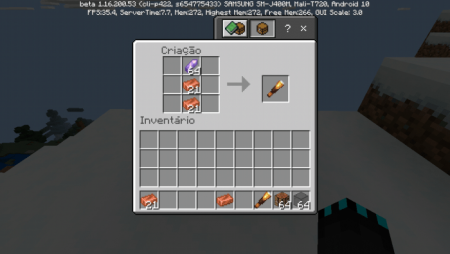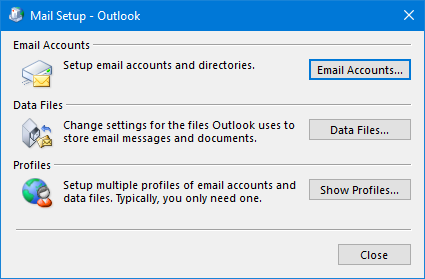Click “Help” and then “About Microsoft Office Outlook”. Under the “About Microsoft Office Outlook” dialogue box it will display the version of Outlook. This will work for Outlook 2003, Outlook 2007 and Outlook Express. Please be advised that Outlook Express is no longer supported by Microsoft, and we do not have. For complete version, click About Outlook/Word. A new window will appear. The top will display the build information and if the client is 32- or 64-bit. Click left arrow to return to Outlook/Word. Start Outlook/Word or any other Microsoft Office application. From the Outlook menu on the Apple menu bar, select About Outlook.
I decided to do an experiment recently in which I switchedto using Outlook Online for all my daily email. So, I put my usual OutlookWindows desktop software aside for a while.
Why would I do this? More and more people are working fromthe web these days, so evaluating Outlook Online is a timely topic. Basically, Iwanted to see how different the two products really were these days. I wantedto see if I could, yet, recommend Outlook Online to my readers.
My conclusion is that Outlook Online is pretty good for basicemail, calendar, and contacts functions, but if you need to process highvolumes of mail, or if you are using my MYN tasks system,you should stick with Windows desktop Outlook.
Want details? Read on.
The main differences between desktop Outlook and OutlookOnline can be summed up in three words: tasks, views, and automation.Windows desktop Outlook does a much better job on all three of these. Let’sstart with tasks.
Outlook Tasks
The Tasks experience in Outlook Online is highly dependent on whether or not you’ve triggered “The new Outlook” setting in the upper right corner of the Tasks window (available only to Office 365 subscribers). That switch looks like this when activated:
Which Version Of Outlook Do I Have Installed
Now, for some Office 365 accounts, that switch has been removed and you are already in the new Outlook Online experience. Conversely, most corporate accounts don’t have access to this since they are using an on-premises version of Exchange.

The Older Outlook Tasks Module

So, if you are not in the new Outlook mode, then you’ll see the normal, older, Outlook Tasks module, the one that has been around for years within Outlook Online.

This older tasks module offers roughly the same fields as desktop Outlook tasks, but it has only about 10% of the sorting and filtering features. One such missing feature is that it has no ability to drag-sort tasks, something I am favoring these days for my 1MTD system.
Furthermore, you can’t drag-convert emails to tasks. And of course, there is no To-Do Bar tasks list view in Outlook Online with the older tasks module.
So, the older tasks module offers a very limited experience when used online. The result is you cannot use it to implement the MYN system, and you really cannot even use it for the simple 1MTD system either—it’s just not very good.
Microsoft To Do Tasks: The New Tasks Pane
However, if you have triggered “The new Outlook” setting, or if you have it by default, then your task experience is completely different.
First, you now do have a very rough equivalent of theOutlook To-Do Bar available. It’s not sorted right for MYN, but at least it showsa task list along with your email. You activate it by clicking this button inthe upper right part of the window.
Once you click that, you’ll see the Tasks pane appear at the right side of the inbox.
Really what’s happening here is that you are now in the “new”Outlook Online experience, and so you are now using the Microsoft To Do tasksmodule instead of the old tasks module.
And there are some good features in this new module. Among them are you can drag-sort tasks vertically and you can drag emails to that pane to convert emails to tasks (or to calendar events).
Tasks Folder = Microsoft To Do Website
The fact that you are accessing a completely different tasks module in the new Outlook Online is especially noticeable when you click on the Tasks icon in the lower left corner of the Outlook Online window. In desktop Outlook this would take you to the Tasks folder. But in the new Outlook Online, this will redirect you to an entirely different product, the Microsoft To Do website.
I have written about this new Microsoft To Do product extensively,and in fact I have a whole video course on howto use it. I’ve also written a recentarticle on my conclusions about Microsoft To Do. Some of my conclusionshave evolved since I produced those videos, so you might want to read that articletoo.
But the net net is this: unless you are using the new Microsoft To-Do product and Office 365 with Exchange, the Outlook Online tasks experience is pretty worthless, I’d stick with Windows desktop Outlook.
Outlook Online Views
Let’s talk now about the second of the three main differences between Windows desktop Outlook and Outlook Online: Views, and in particular, email list views.
The default Outlook Online Inbox view roughly matches the standard compact view of desktop Outlook. In this view you’ve got a few lines of the email displayed for each item in the inbox list, and you’ve got a Reading pane view of the email off to the right, as I show below.
You can turn that Reading pane on and off if you click Settings(the gear icon in upper right), and then use the controls in the lower portionof the Settings pane that opens.

If you turn the Reading pane off, then you get a single-line list of email in your Inbox, as I show below, one that is roughly similar to the single-line view in desktop Outlook.
What Version Of Outlook Is Running
Not Good for Speedy Email Processing
These compact and single-line views are okay, but you have very little control over them. For example, if you studied my Outlook Inbox Ninja course, you’ve seen that the inbox in Windows desktop Outlook offers a ton of view options that can greatly speed your processing of email. Not so with Outlook Online.
For example, one problem in the Outlook Online compact inbox view, the top one above, is this: Even if you have a large monitor you cannot drag-widen the inbox list on the left past a certain rather narrow point. And its widest setting is way too narrow in my opinion. There are many other limitations compared with Windows desktop Outlook.
Automation
The third main feature gap in Outlook Online is in automation. Here I mainly refer to limits in using Outlook Rules and Quick Steps. The Rules module on Outlook Online is okay, but it is nowhere as powerful as the one built into Windows desktop Outlook. That will slow you down if you heavily filter your incoming mail, like I recommend.
My bigger complaint is that the Quick Steps feature iscompletely absent in Outlook Online, and Quick Steps is a really nice feature. AsI show in my OutlookInbox Ninja course, one of the great things about Quick Steps is theautomating of one-click filing. Since that’s absent in Outlook Online, itbecomes slow to use folders other than the Archive folder for folder filing.
Conclusion
Outlook Online is quite usable if you have moderate volumes of email, calendar, and contacts. It is a good choice if you have decided to work purely in a web browser environment.
But if you get too much mail and need to process it rapidly, you’ll be greatly disappointed by Outlook Online. Rather, Windows desktop Outlook is the better way to go. And if you want to use my powerful MYN tasks system along with Outlook, there is really no choice: you should be using Windows desktop Outlook to truly get control of your tasks.

